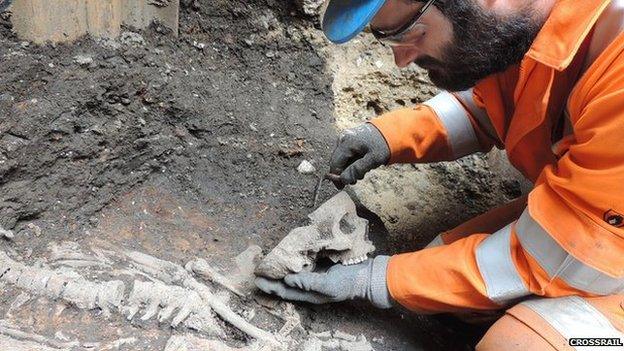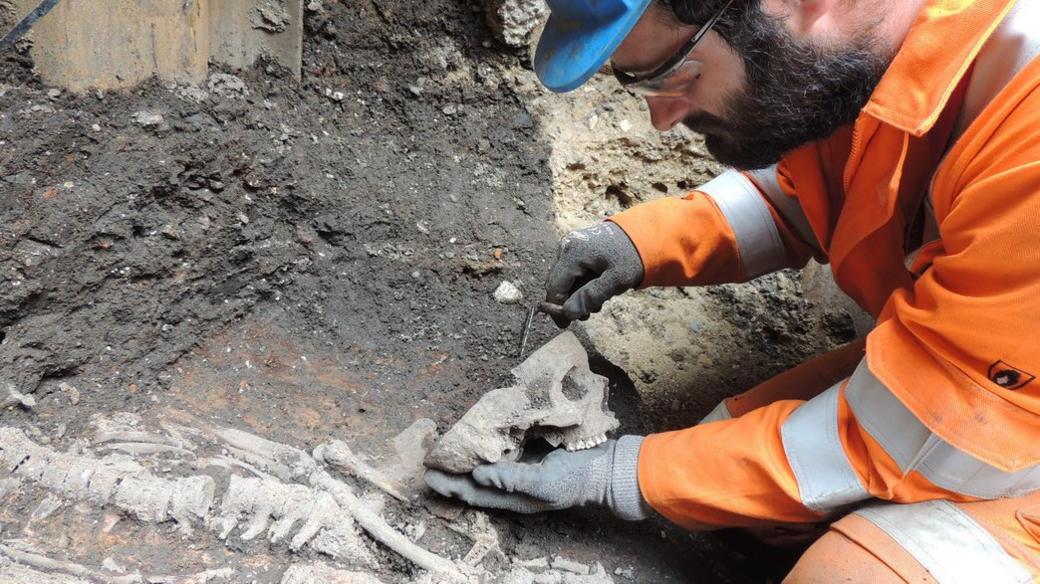Bedlam burials: Thousands of skeletons to be unearthed
- Published

Bedlam burial ground was established in 1569 to help parishes cope during outbreaks of plague
Remains of a former mayor of London as well as those of political activists could be unearthed when the excavation of a burial ground takes place.
The excavation is part of the Crossrail project which has identified thousands of victims buried at the Bedlam burial ground under Liverpool Street, London.
Names of people buried at the site include Sir Ambrose Nicholas, who was lord mayor of London in 1575.
Work to excavate 3,000 skeletons starts in March.
Other people identified as being buried at the site include Dr John Lamb, an astrologer and advisor to the First Duke of Buckingham.
Dr Lamb was said to have been stoned to death by an angry mob outside a theatre in 1628 following allegations of rape and black magic.
Others identified in the research, carried out by 16 volunteers and covering burials in the 16th and 17th Centuries, include victims of riots by "Fanatiques", as they were noted in the diaries of Samuel Pepys in January 1661.
Bedlam burial ground was established in 1569 to help parishes cope with overcrowding during outbreaks of plague and other epidemics.

Volunteers searched records of the Bedlam burials held at the London Metropolitan Archives
Jay Carver, lead archaeologist at Crossrail, said: "This research is a window into one of the most turbulent periods of London's past.
"These people lived through civil wars, the Restoration, Shakespeare's plays, the birth of modern industry, plague and the Great Fire.
"Our heartfelt thanks go to the volunteer researchers, who have contributed immensely to Crossrail's legacy."
Roman artefacts
The archaeological excavations at Liverpool Street are being undertaken by Museum of London Archaeology on behalf of Crossrail.
The upcoming dig is also expected to uncover medieval and Roman artefacts, and help piece together centuries of history.
After excavation, the skeletons will be reburied on consecrated ground.
To date, Crossrail, which will be fully opened in 2019, has found more than 10,000 artefacts from London's long history across more than 40 construction sites.
- Published3 July 2014
